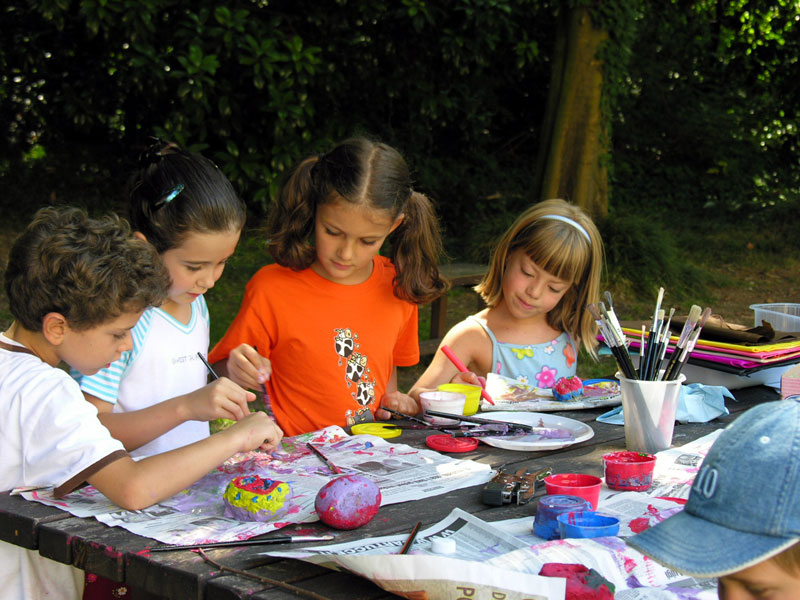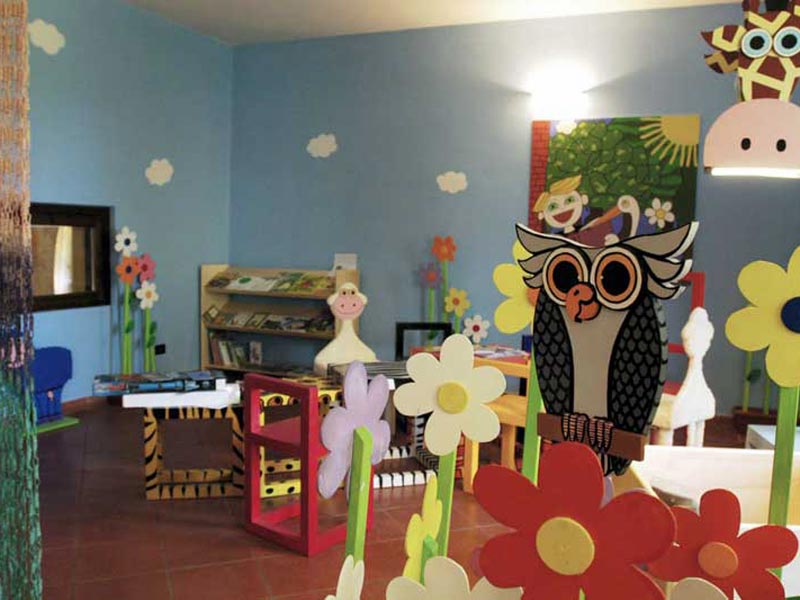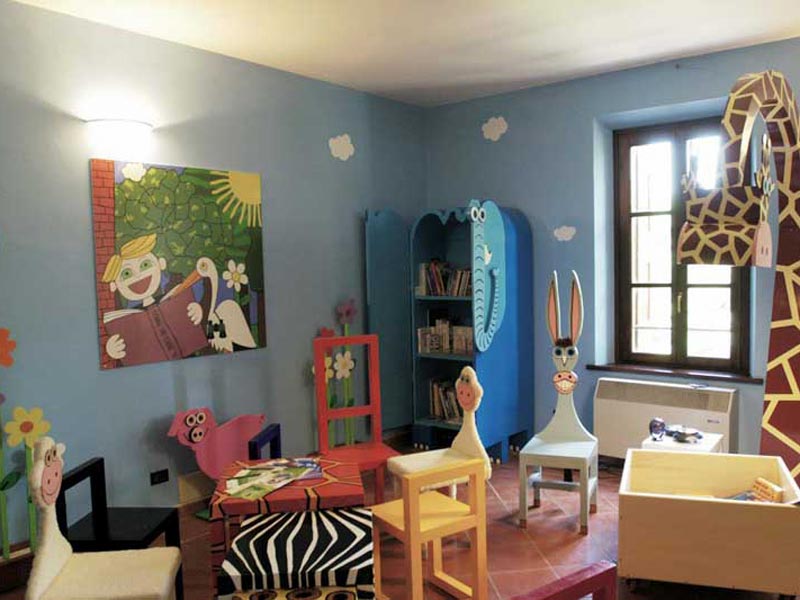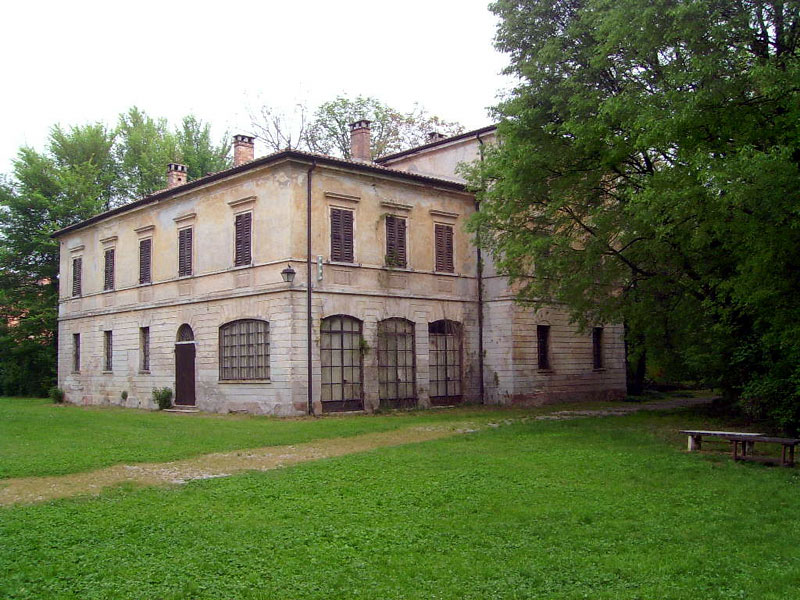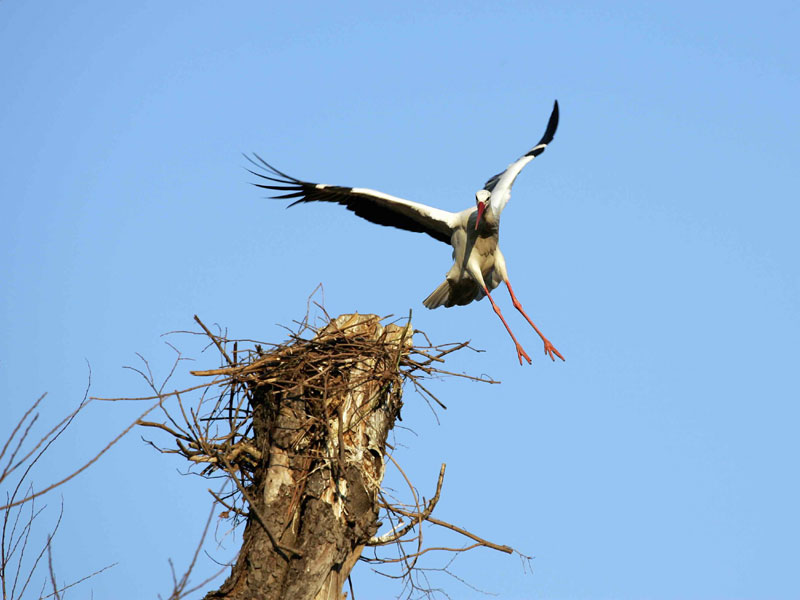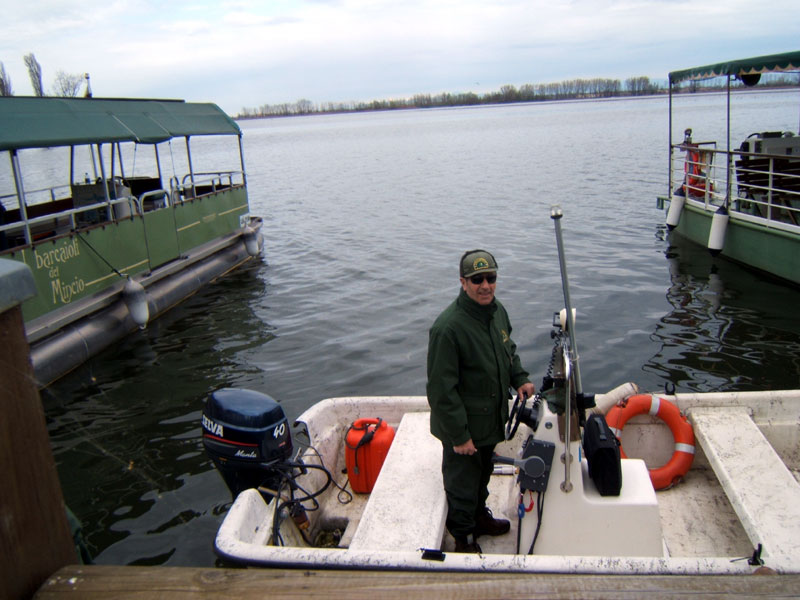Parco del Mincio
www.parcodelmincio.itFacilities
Environmental Guides
The guides work with the Park, which activated a Tourist Didactic Office managed by the guides themselves. The office manages the booking requests and gives information on the itineraries. Open from Monday to Friday from 10.00 am to 1.00 pm. E-mail: didattica@parcodelmincio.it
Environmental guides of the Mincio ParkEcotourism and Guided Visits
Ecotourism activities consist of half-day or full-day interactive guided visits in the Park territory.
Further information For information and bookings, please contact the educational and tourist secretary of Mincio Park open from Monday to Friday, from 10.00 a.m. till noon - Tel. +39 0376 228320 - Fax +39 0376 228330 - E-mail: didattica@parcodelmincio.it
Nature Toy Library
A Thousand Books and Games in the Thousand-Tree Wood...
Bertone Park Center - Goito (Mantova)
Bertone Park Center of Mincio Park enriches itself with something new for children from 4 to 12 years old,
but also a service for the people accompanying them (parents or
educators).
It is "Biblioteca-ludoteca della natura" (Nature Toy Library).
A service which, by focusing on the environmental features of the place
housing it, will have original features and peculiarities.
As a matter of fact, the physical place where books and games will be
positioned will be one of the halls of the restructured building former
stables of Bertone Visitor Center. However, each person will have
the opportunity to borrow the book he/she likes more and 'taste' it at
the shadow of the centuries-old plants forming the romantic garden of
the Bertone.
Each visitor will have the opportunity to:
- choose to read a tale dealing with nature, while you are surrounded by nature;
- skimming through a book dealing with storks and - once you look up at the sky - admiring the real storks housed in the reintroduction center annexed to the Bertone;
- look at a guidebook for the recognition of plants, and immediately, in the field, recognizing and finding a ginko biloba or a small branch of butcher's broom, and much more.
A sort of open library offering much more than just a theoretical or virtual knowledge of the natural elements.
The scheme of reading and at the same time touching-seeing-smelling can
be recycled also for the section of the games, some of which can be
used in the open air.
"Biblioteca-ludoteca della Natura" is open during the holidays from
March to October, from 10.30 a.m. to 6.30 p.m. and it is a free
service: it is necessary to have the entrance ticket to the Park Center
Bertone. The first opening to the public will be on Sunday 30th May
2004 from 4.00 p.m. to 6.00 p.m. with free animation on the occasion of
the 6th Week of Culture.
The project "Ludoteca-biblioteca della natura" has been carried out thanks to important supports:
- The economic support of Fondazione Banca Agricola Mantovana, which has allocated the necessary funds to buy the first books and games, to make the place cosy thanks to the help of skilled craftsmen, and to buy the wooden elements of the unusual furnishing which has been created with unique pieces.
- The support of the Provincial Administration of Mantova, Assessorato alla Cultura Servizio Biblioteche which carried out the book cataloguing.
Summer Creative Workshops at Bertone Park Center
For families with children from 3 to 10 years old
Camouflage, tactile and olfactory experiences, epidermal contact, the recovery of emotions, using game and imagination to experience nature. These are the experiences we will suggest from Sunday 24th April to children from 3 to 10 years old and to the persons coming with them during the holiday afternoons at Bertone, the visitor center of Mincio Park. As a matter of fact, the calendar consists of 25 workshops whose aims are the recovery of manual skills and sensitization towards the recycling of materials we use every day. Aluminium tops, plastic bottles, yogurt jars becoming sprites' noses, small greenhouses, games, and again, small branches and leaves gathered from the ground which become a nest or disguise children and parents: the activities take place from 3.30 p.m. and are organized by the operators of Aster-Koinè and Mincio Park .
The workshops dealing with environmental issues will be held on Sundays and holidays until the end of September.
The proposal is dedicated to families with children from 3 to 10 years old and will take place at the shadow of the big trees of the park-garden. Beside the workshops, there will be a corner to draw and a corner to play. The main activities will be repeated more than once in the afternoon, if possible. To take part in the workshop, you must purchase the ticket at the cost of 3 Euros per children, 2 Euros if you come by bike.
The workshops are characterized by the use of poor and recycled material (with the help of SIEM) and of natural material, gathered by children in the meadow and in the wood during the activities.
Children will be led in the creation of games, handicrafts, disguises, and the adults will have the opportunity to collaborate with educators and play with their children.
For information: Segreteria didattica del Parco del Mincio - Piazza Porta Giulia, 10 - 46100 Mantova
Tel. and Fax +39 0376 397138 - E-mail: didattica@parcodelmincio.it
Studies and Research Activities
Implemented Projects
The white stork. The project for the reintroduction of the species.
In Mincio Park , in Bosco del Bertone, a project for the reintroduction of the white stork is taking place. It is an initiative aimed at creating, within the Park, a steady nucleus of nesting White Storks, by intervening in an artificial manner to lead to the establishment of a "territorial link" among the animals. The surrounding territory is particularly suitable for the needs of the species, something that is confirmed by the more and more frequent stops of the migratory Storks.
After a first attempt of nesting in 1990, in March 1994 the first dozen of Storks came from Switzerland. In 1996, inside large aviaries, the first chicks were born. The following year, the release of the Storks began: they found in the surrounding territories abundant food.
The first free couple has built the nest on a high platform at the center, and many others followed its example in the following years. Sometimes also mixed couples formed between a released individual and a wild one which stopped during the spring migration.
Since then, the flight of the Storks around Parco del Bertone is a usual view, and the "close encounters" with these birds in the surrounding meadows are frequent.
The hope is that the Storks begin to build their nests farther and farther from the center, living free and independent in our skies and contributing to the recovery of the species in Western Europe. The project of Mincio Park began in close collaboration with Swiss White Stork Society (Altreu, Switzerland) and is included in the programs of the International White Stork Working Group-Western Population.
Further information (Italian text)
The program of numerical control of the nutria (myocastor coypus)
In Mincio Park the interventions of capture of Nutria began in November 1994; it was the first faunistic control of Nutria on a large scale ever carried out in Italy, and it became the model for the following interventions.
The program, which is rather complex as far as the organization is concerned, is still underway, and it reached extremely positive results, both in the reduction of the problems created by the Nutria to the natural ecosystems, and in the mitigation of the damages to the agricultural cultivation and the hydraulic structures. An example of positive result as far as the conservation of the environment is concerned has been obtained in the Natural Reserve "Valli del Mincio". Here the Water chestnut (Trapa natans), one of the most characteristic vegetal species of the area, seemed almost disappeared because of the grazing of the Nutria; after strong capture interventions, the plant is nowadays present on wide stretches of the territory, and has become one of the most common species.
Other positive results of these interventions are evident throughout the territory, from Pietole up to the confluence of the Mincio into the river Po, on the right bank of the river: here the inhabitants do not complain about damages to the cultivation or to the embankments. The fact is rather significant if you consider the very serious situation of this territory, completely invaded by the rodent before the interventions of the Park; in that period, the daily and legitimate protests by the residents, who found the Nutria everywhere, with enormous damages, filled the newspaper's pages. The scientific person in charge of the project Nutria is the biologist Cesare Martignoni. The management model of the problem Nutria used by Mincio Park since the end of 1994 until today, has been also considered interesting by the other Authorities involved in the solution of the problem. The plan has become the model, both in the implementation modalities and in the equipment used, for many public administrations and research institutes in Italy; the National Institute for the Wild Fauna itself, the scientific and technical research and advice organ for the State, the Regions, and the Provinces, is recommending it to those who need advice.
The program implemented in Mincio Park is without a doubt heavy for the Authority in charge but, in order to carry out in the correct manner a faunistic management program which is wide and complex like the Nutria one, it is necessary to invest also considerable resources.
Since 1994 until today (July 2003), the captures have been 11,337.
(The following links lead to web pages in Italian)
- Information about the species
- Where do nutrias come from?
- What problems does it cause?
- Summary of the captures
Surveillance (G.E.V.)
The G.E.V., voluntary ecological guards of Regione Lombardia, after more than twenty years from their establishment (Regional Law n. 105 of 1980, "Disciplina del servizio volontario di vigilanza ecologica"), are nowadays a strong reality: a reality which is growing, and which developed both as far as technology and organization are concerned, in a constant cultural turnover.
They are anomalous characters: a voluntary work inserted in the institutions and operating close to local officers and administrators, but also largely autonomous, like every voluntary work must be.
Further information (Italian text)




